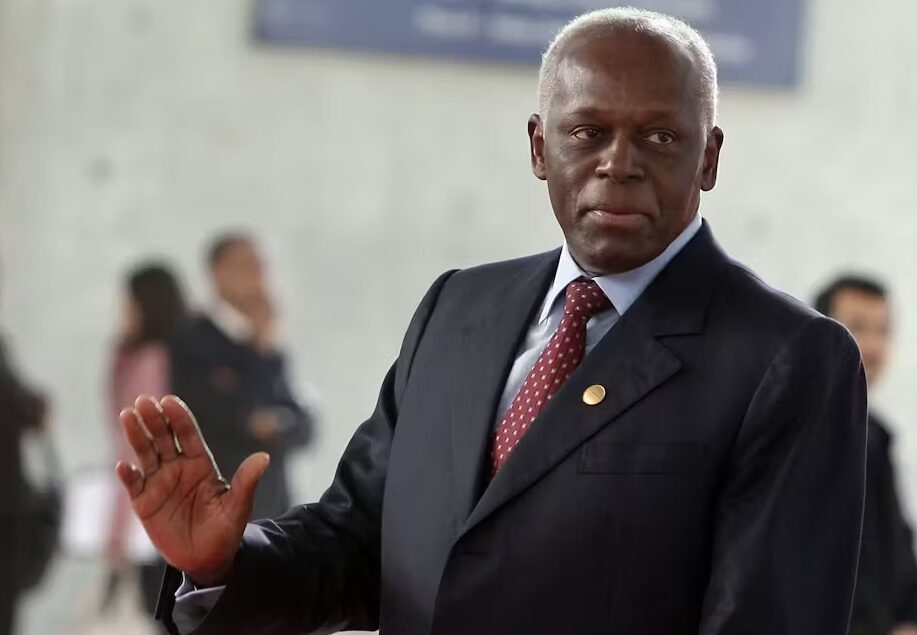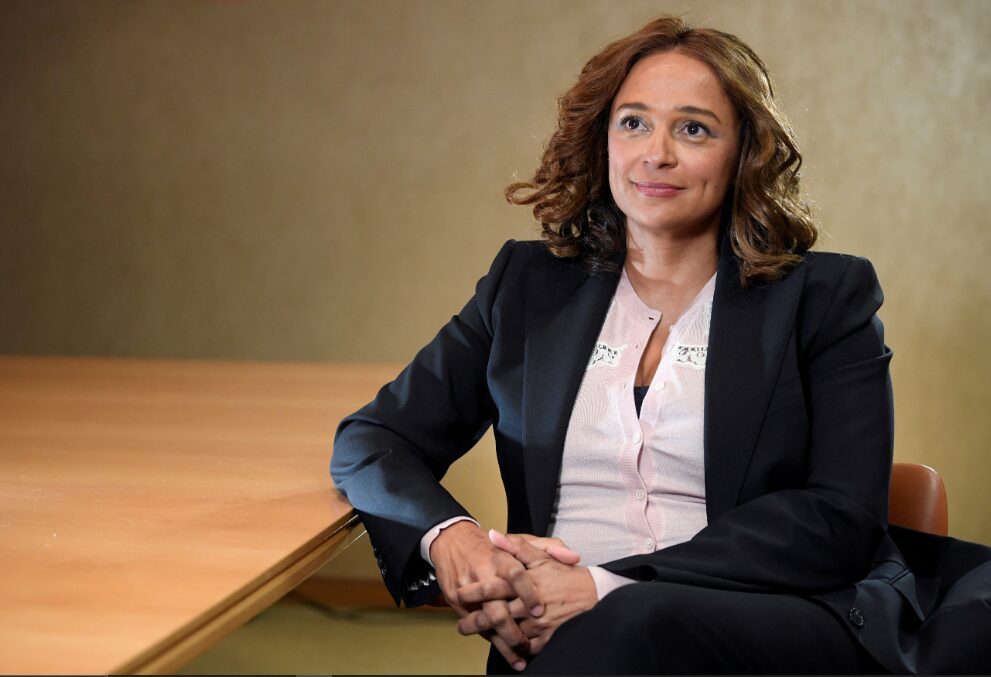In Luanda, a report from a watchdog revealed that José Eduardo dos Santos, the former President of Angola, held the title of the country’s wealthiest individual, boasting a net worth of $20 billion.
Mr. dos Santos’s eldest daughter, Ms. Isabel dos Santos, secured the second position with a net worth of $3.4 billion.
Table of Contents
ToggleWho was José Eduardo dos Santos
José Eduardo dos Santos ;August 28, 1942 – July 8, 2022) held the presidency of Angola from 1979 to 2017.
During his tenure, dos Santos served as both the commander-in-chief of the Angolan Armed Forces (FAA) and as the president of the People’s Movement for the Liberation of Angola (MPLA), the ruling party since Angola’s independence in 1975.

source : images
Upon relinquishing power in 2017, dos Santos had become the second-longest-serving president in Africa, surpassed only by Teodoro Obiang Nguema Mbasogo of Equatorial Guinea.
José Eduardo dos Santos net worth
The wealth amassed by the former statesman was accumulated during his tenure in power spanning from 1979 to 2017.
During this period, he held the position of president until he was succeeded by João Lourenço, thus relinquishing leadership of the Popular Movement for the Liberation of Angola (MPLA), established in 1956.
Born on August 28, 1942, José Eduardo dos Santos, trained as a petrochemical engineer, emerged as the most influential and affluent figure in Angola, earning him recognition as one of the most powerful individuals in Africa.
In the second position is Isabel dos Santos, recognized by Forbes as Africa’s wealthiest woman.
Her fortune is valued at $3.4 billion.
Despite global recognition, the Angolan Attorney General’s Office considers an arrest warrant.
She’s acknowledged as one of the 100 most influential women by the BBC.
Taking the third spot is Lopo do Nascimento, a former Angolan prime minister.
He later served as minister of territorial administration.
Nascimento left government in 2013 amidst wealth uncertainties.
His amassed wealth is valued at approximately $750 million.
Following closely on the list are Generals Higino Carneiro, with a fortune estimated at $400 million, and Hélder Vieira Dias, with $350 million.
Both individuals enjoyed the trust and favor of José Eduardo dos Santos over the years. Carneiro currently serves as the governor of Luanda province, while Vieira Dias, known by his war name “Kopelipa,” holds the position of director of the National Office of Reconstruction.
He has been hailed as a key and dependable member of dos Santos’ advisory team.
Angola’s economy heavily relies on oil, but the current government has expressed intentions to diversify the economy, prioritizing sectors such as agriculture, tourism, and the exploration of natural resources like gold and diamonds.
José Eduardo dos Santos' WealthSource of wealth
The extensive business empire of the Angolan Dos Santos family, spanning banking, telecommunications, media, and notably, the oil sector, has experienced significant decline.
Investigative journalist Rafael Marques de Morais criticized José Eduardo dos Santos for allegedly privatizing state assets to benefit his family and a select few associates, accusing him of plundering national resources.
Here’s an overview of key figures within the family’s business network:
Isabel, the daughter
Often dubbed “the princess,” Isabel, aged 49, represented the public face of the Dos Santos business conglomerate.
Initially appointed by her father to lead the state-owned oil giant Sonangol, she was subsequently removed from her position following the ascension of Joao Lourenco as president.

Isabel dos Santos was once Africa’s wealthiest woman, with a fortune of $3.5 billion.
She controlled Angola’s leading mobile operator, Unitel, until 2020.
Dos Santos held stakes in Portuguese media firm NOS and banking sector investments.
She and her late husband owned the luxury jeweler De Grisogono.
Her business empire faced dismantling after an ICIJ investigation.
Dos Santos is under investigation in Angola for alleged crimes.
She denies accusations of mismanagement and money laundering.
Jose Filomeno, the son
In 2013, Jose Filomeno de Sousa dos Santos, commonly known as Zenu, received appointment from his father to oversee a sovereign wealth fund valued at $5 billion when he was just 35 years old.
However, authorities arrested him six years later on charges of fraud, money laundering, and influence peddling.
He was found guilty of attempting to embezzle up to $1.5 billion from the sovereign wealth fund he managed between 2013 and 2018.
Consequently, he received a five-year prison sentence in 2020, becoming one of the first members of the former presidential family to face prosecution under President Lourenco’s anti-corruption campaign.
‘Tchize’, the other daughter
Married to a Portuguese businessman, Welwitschia dos Santos, often referred to as “Tchize,” played a prominent role in Angola’s media landscape, particularly within the public broadcaster TPA and leading two tabloid-style publications.
While less visible than her half-sister Isabel, she controlled a major multimedia and advertising agency in Angola and became the first Angolan woman to head a major football club, Benfica de Luanda. .
Following her brother’s conviction, she accused President Lourenco of unfairly targeting the Dos Santos family for political reasons.
Ana Paula, the wife
Ana Paula, José Eduardo dos Santos’ second wife, formerly a flight attendant, was reportedly involved in several diamond mining ventures, according to local media.
She held a direct five percent stake in Sol bank, as reported by Angola’s economic journal Expansão, and an additional 10 percent through her foundation.
Career
Military Career
In 1970, dos Santos returned to Angola, then still a Portuguese territory referred to as the Overseas Province of Angola.
He spent three years serving in the MPLA’s EPLA guerrilla force (Exército Para a Libertação de Angola), later renamed as the People’s Armed Forces for the Liberation of Angola (FAPLA), the military arm of the MPLA.
He held the role of a radio transmitter in the second political-military region of the MPLA in Cabinda Province.
By 1974, he had risen to the rank of sub-commander within the telecoms service of the second region.
Dos Santos also served as the MPLA representative to Yugoslavia, Zaire, and the People’s Republic of China before being elected to the Central Committee and Politburo of the MPLA in Moxico in September 1974.
Political Career
In June 1975, dos Santos coordinated the MPLA’s Department of Foreign Affairs and Health.
After Angola’s independence, he became the first Minister of Foreign Affairs.
Dos Santos worked to gain diplomatic recognition for the MPLA government.
His efforts helped the MPLA maintain power in Luanda during civil war.
At the MPLA’s First Congress in December 1977, dos Santos was re-elected to both the Central Committee and Politburo.
In December 1978, he transitioned from the position of First Deputy Prime Minister to Minister of Planning within the government.
Following the death of Angola’s first president, Agostinho Neto, on September 10, 1979, dos Santos assumed the presidency of the MPLA on September 20, 1979.
He officially took office as President of Angola and Commander-in-Chief of the Armed Forces on September 21.
Subsequently, on November 9, 1980, he was also elected President of the People’s Assembly.
Controversial issues
Dos Santos faced accusations of corruption, neglecting Angola’s welfare, and enriching his family.
Nearly 70% of Angolans live below the $2 poverty line.
Upon taking power, Dos Santos rapidly amassed wealth.
He expanded assets during and after civil conflicts.
Utilizing ceasefire and privatization, he controlled emerging companies.
Transparency International labeled Angola among the most corrupt.
Dos Santos allegedly transferred assets to his daughter.
He acquired stakes in companies through government mechanisms.
The Luanda Leaks revealed a vast money laundering network.
Entities involved include Banco BIC, consulting firms, and others.
Government spending reached $69 billion in 2012.
$32 billion of oil revenue went missing, as per IMF.